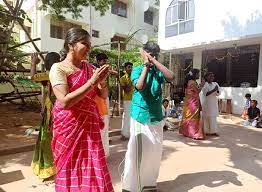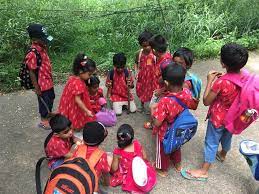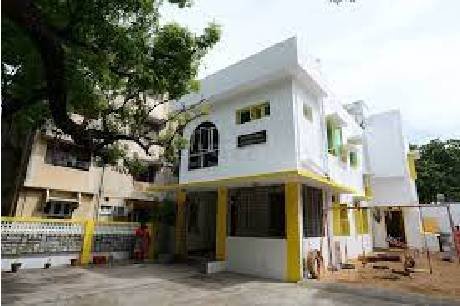
Indradhanu Waldorf School
Indradhanu Waldorf School, Lynwood Avenue, Mahalingapuram, Nungambakkam, Chennai, Tamil Nadu, India
Co-ed
₹ 36000 P/A
Nursery - UKG
About School
he Waldorf curriculum is designed in such a way that it perfectly complements the development of the child, at every stage, evolving with the child itself. It is based on a scientific understanding of how the human body develops – when is the hand ready to hold a pencil, when is the brain ready to absorb intellectual lessons, what happens during puberty and how does that affect my understanding of the world, when is the heart ready to handle emotional stress, how does a growth spurt affect my learning, and so on – and on the individual child’s capacity. The curriculum encourages the child to actively respond to her environment and gives her space to discover her inner and outer worlds in an unhurried, non-competitive, non-judgemental space.
There is an abundance of learning through the creative arts in a Waldorf school, and there have been several recent researches to show how imperative this is for learning. You could ask a kindergarten child, “What did you do in school today?” and the answer you might get is “We sang, painted and played”. But within that simple answer, a complex system of deep academic thought exists. In the Waldorf method, nothing is done arbitrarily; everything carries meaning in relation to the child’s developmental needs. And this is translated into every activity – singing, cooking, free play, painting, beeswax modelling, movement and rhythm. They learn words and languages through music and math through movement and physics through clay. As they go higher up in Grade School, what they learn changes, but the method of engaging all the senses of the child remains.
Unlike popular misconception, the Waldorf curriculum is very structured. The days, the week, the month and the year follow specific rhythms that help set gentle but firm boundaries for the child, allowing her the freedom to explore without losing sight of this natural, rhythmic flow in her life, much like nature itself – the sky, though endless and vast, still exists between night and day.
By combining creativity, communication, collaboration, critical thinking and problem solving, imagination, exploration, movement and artistic expression, the Waldorf curriculum creates a richly rewarding academic experience.
Additional Details
- Minimum Entry Age :- 3
- School Provide Meals ? :- No
- Air condition Class ? :- N/A
- CCTV Surveillance ? :- Yes
- Day Boarding ? :- N/A
- Teacher Student Ratio :- 10:1
- Total Seats at Entry Level Grade :- N/A
- Total School Strength :- N/A
- Average No of students per class :- N/A
- Total No. of Teachers (All Class) :- N/A
Infrastructure
- Fire Safety :- No
- School has Strong Room ? :- No
- School has Wifi Enabled ? :- No
- Total No. of Playground ? :- N/A
- Total No. of Rooms ? :- N/A
- No. of Laboratories. :- N/A
- No. of Lift elevator. :- N/A
- Total No of computers. :- N/A
- No. of Activity room. :- N/A
- School has clinic facilities ? :- No
- School has Gymnasium ? :- No
- Total Area of School ? (Sq) :- N/A
- Total area of playground ? (sq) :- N/A
- Total No. of Library ? :- N/A
- No. of Auditorium. :- N/A
- No. of Digital Classroom. :- N/A
- Total No. of Buses Owned. :- N/A
- Transport Facility :- No
Fee Details
- Admission Fee :- ₹ 10000
- Annual Fee :- ₹ 36000
- Transport Fee :-
- Others Fee :- ₹ 10000
Gallery
Reviews
0.0
No Review
Based on
0 reviews
5 stars
4 stars
3 stars
2 stars
1 stars





